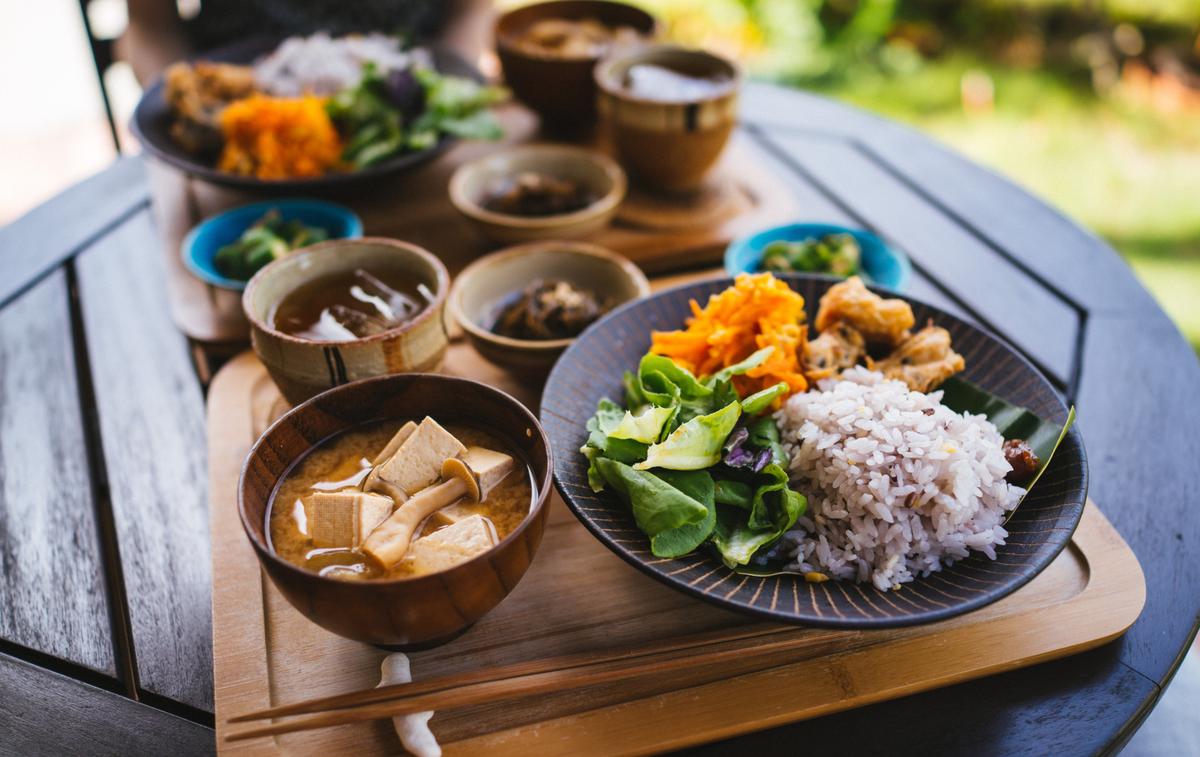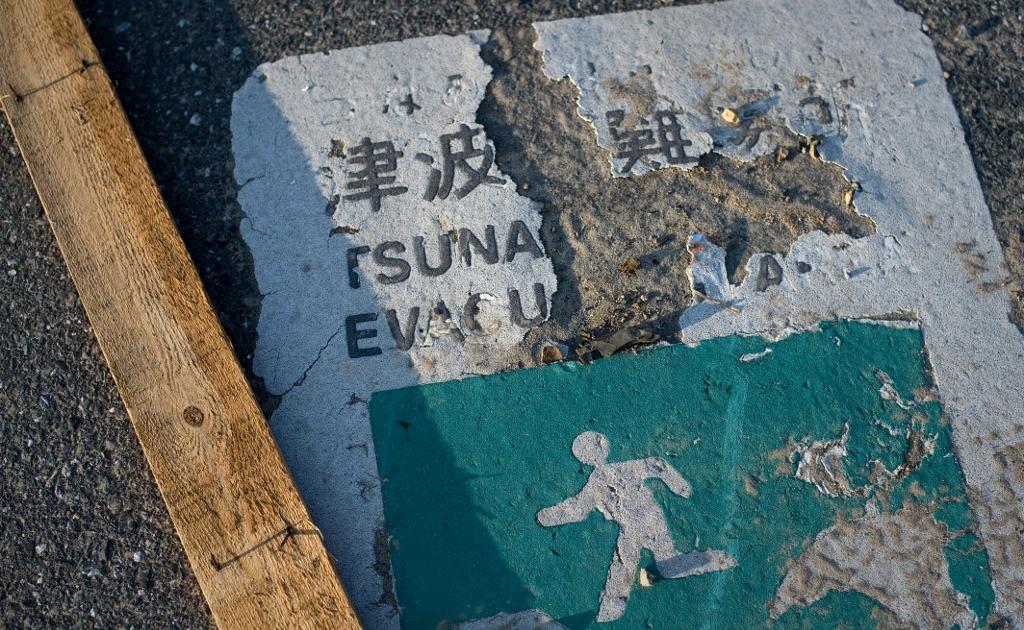119: the number of candles blown out by the oldest of humanity, the Japanese Kane Tanaka, on Sunday, January 2.
A great age that recalls that of the centenarians of the island of Okinawa, lost in the middle of a string of islands in the East China Sea.
A diet bears its name.
For twenty years, this condensed plant, iodized flavors and textures of all kinds has competed with the famous Mediterranean diet thanks to its nutritional virtues.
What does it consist of?
What are its real benefits and how to apply them well at home?
Our responses.
To read also »
Dessert creams and chocolate mousse: the rare products" saved "by" 60 million consumers "
More than a diet, a healthy lifestyle
Before being a diet, Okinawa is above all a mythical place.
This Japanese island belongs to the very select club of the five "blue zones" of the world, those places where we have the highest life expectancy.
Here, there are 42 centenarians per 100,000 inhabitants, three times more than in France.
Far from being bedridden, they appear less affected by diseases linked to aging (cardiovascular disorders, diabetes, cancers).
"This longevity is linked above all to their good genetic capital, and to a lesser extent, to daily physical activity associated with a balanced diet", emphasizes Pierre Nys, endocrinologist and nutritionist.
In video, the three rules of healthy eating
The content of the Okinawaiian plate was popularized thanks to observatory studies by cardiologist-gerontologist Makoto Suzuki in the 1970s. "Centenarians do not eat processed products, rich in hidden salts, eat little meat and dairy products. , reports Sybille Naud, dietitian nutritionist and co-author of the
Okinawa Diet
(1). They favor seasonal vegetables, sources of fiber, vitamins and low in calories, and fish, rich in unsaturated and polyunsaturated fats, essential for cardiovascular health. ”
The whole thing is supplemented by “slow carbohydrates - rice, buckwheat noodles, sweet potato, azuki beans - which provide long-lasting energy, lists the specialist.
Also vegetable proteins such as tofu, seaweed, spices such as turmeric and green tea, known to be antioxidants. "
Eat slowly and in small amounts
If it is similar to the Mediterranean diet by its richness in plants and iodine, the Okinawa diet is distinguished by its moderation on the plate.
Called "hara hachi bun", this Japanese food concept consists of eating only 80% of your hunger.
Clearly, "it must occur just before reaching satiety, when you feel a slight pressure on the stomach", details Sybille Naud.
In principle, this usually materializes in the absence of dessert.
"If we eliminate sweet yogurts or cakes, this will participate in weight loss and reduce the risk of type 2 diabetes," confirms the dietitian nutritionist.
Hence the importance of listening to yourself during the meal.
"The Okinawaians consume a lot of semi-cooked or raw products, which promotes slow chewing and thus satiates more quickly", adds Sybille Naud, who invites to eat a fruit in case of hunger during the day.
Read also »
Should you eat your fruit before a meal?
If large-scale scientific studies are still lacking on this Japanese diet, recent American studies show encouraging results concerning light calorie restriction in humans, indicates Béatrice Morio-Liondore, researcher in nutritional physiology at INRA (Institut National de la Recherche Agronomique) and president of the Société Française de Nutrition. "The conclusions of this study suggest an improvement in the metabolic profile (
minimum energy the body needs to ensure its vital functions, Editor
's note ) and a loss of abdominal fat," she reports.
However, a significant loss of muscle mass has also been reported by American researchers.
This is why the scientist insists on the importance of daily physical activity associated with this diet.
Composed of pork broth, soba noodles and various vegetables, ramen fits perfectly into the Okinawa diet.
Getty Images
Sample Okinawaiian Menu
From breakfast, the dietician nutritionist Sybille Naud advises to avoid sweet and its "hyperglycemic effect", which causes cravings and pumping in the morning.
“Fried eggs or an omelet, for example, with a little rice or azukis, various raw or cooked vegetables,” she suggests.
At lunch, we give pride of place to broths.
“This cooking technique is used for meats and further eliminates fat,” explains Sybille Naud.
It can be served as ramen, this typical Japanese dish made from pork broth, soba noodles and various vegetables.
The latter can be seasoned with soy sauce, bonito or ginger flakes, or even nori seaweed.
Ten Japanese recipes
Tuna and salmon sushi and makis
The most adored Japanese recipe in the West: traditional sushi!
See the recipe for tuna and salmon sushi and makis.
Photo Souksavanh Khamla
Lime and ginger marinated tuna sushi
Discover the recipe for tuna sushi marinated in lime and ginger.
Photo Alsace Wines
Fruit sushi
Discover the recipe for fruit sushi.
Photo Cedus, Daniel Mettoudi
Foie gras sushi
Discover the recipe for foie gras sushi.
Photo Souksavanh Khamla
Snacked Saint-Jacques sushi
Tuna and salmon sushi
Chicken wing yakitori
Beef Yakitori with Cheese
Sake Chicken Meatballs Yakitori
Matcha green tea cake
See the slideshow
10 photos
Pickles and spinach
For dinner, we follow the Okinawaiian tradition, namely rice accompanied by three small dishes.
For example, noa cucumber pickles, tofu spinach and steamed eggplant.
To hydrate yourself during meals, we turn to soup, miso or seaweed such as sea lettuce, as well as green tea or jasmine.
If this menu may seem draconian in the eyes of Western Epicureans, the endocrinologist-nutritionist Pierre Nys recommends adhering to this diet periodically, for 6 to 8 weeks, and alternating it with a richer but still balanced diet, with a diversity of proteins and aromatic herbs.
"We have a lower tolerance than the Japanese towards seafood, especially seaweed, which is rich in iodine," he points out.
If you have a genetic predisposition to thyroid disease, an iodine overload can cause hormonal imbalance ”.
(1)
Okinawa diet
, by Sybille Naud and Coralie Ferreira, published by Hachette Pratique, 208 pages, € 19.95.
The editorial team advises you
Eight tips for adopting the Mediterranean diet, one of the healthiest in the world
Stop dieting, make way for instinct
Lose weight quickly with the cabbage soup diet: true from false




/cloudfront-eu-central-1.images.arcpublishing.com/prisa/4GRYF43Y55DXTPH55MNNOJUJAY.jfif)
/cloudfront-eu-central-1.images.arcpublishing.com/prisa/MYJK65WXKZFVFFZQD4CJVYBHA4.jpg)



/cloudfront-eu-central-1.images.arcpublishing.com/prisa/34VDHFBST5DFLDSXFEQEZRVRBI.jpg)





